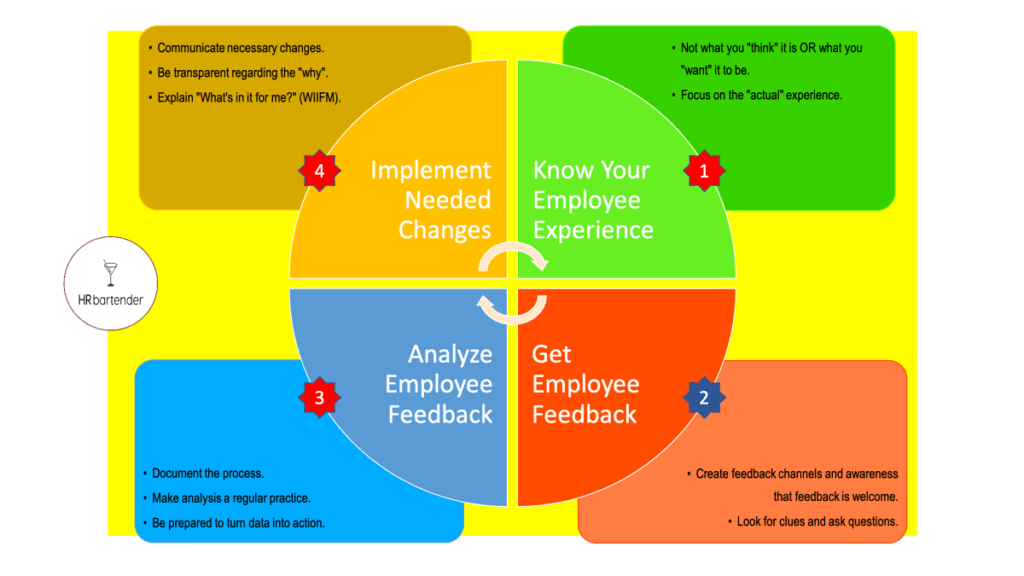4 Steps to Create a Support Driven Company Culture

Several months ago, I shared an article about using empathy maps to design a better employee engagement experience. The article was from a WordCamp Miami session Mr. Bartender and I attended earlier this year.
Another session we attended during the conference was about creating a “support driven” business. While the session was really aimed at being a customer support driven business, I could easily see how the model they shared could be applied to creating a support driven company culture. Above is the model I sketched during the session for creating a support driven business so you can see for yourself.
One of the things that I love about this model is the emphasis it places on feedback. Over the past few years, organizations have dedicated a lot of resources toward improving feedback mechanisms – at every level of the organization. While I think that the initial focus of those resources has been to replace the traditional performance review model, that doesn’t mean it can’t be used for something like this. Feedback is a good thing. Why not use it to develop a support driven company culture?
In fact, this type of model can support the organizations efforts with regard to performance management because, in this model, no feedback is a bad sign. Performance management systems work because they have good processes, feedback channels, and outcomes.
Creating a support driven company culture relies on employee feedback just like creating a support driven business relies on customer feedback. We’ve become a society that appreciates recommendations and feedback. As consumers, we get it via reviews on Amazon and status updates from our Facebook friends. On the work side, we rely on others to tell us about the candidate and employee experiences on Glassdoor and Indeed. And we use that information to make decisions about whether to apply or take the job offer.
I can see creating a support driven company culture improving employee engagement (because employees feel comfortable sharing feedback), reducing turnover (because employees see the company taking action on their feedback), and improving performance (because employees feel invested in the company’s success).
Human resources departments can use this model to maintain relevancy in a constantly changing business landscape. Our role becomes being the advocate for feedback from employees, managers, and executives. We help the business analyze the data to create a winning solution for everyone. And we support the change management process, so the organization becomes stronger with every iteration.
11